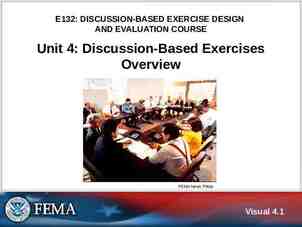3-1. Key Sanitation Condition No. 3: Employee ‘practices’ to
15 Slides298.50 KB
3-1. Key Sanitation Condition No. 3: Employee ‘practices’ to prevent cross-contamination; Separation of raw and ready-to-eat foods; and Plant design to prevent cross-contamination. 3-2. Cross-Contamination: Cross-contamination is the transfer of biological or chemical contaminants to food products from raw foods, food handlers, or the food handling environment. The type of cross-contamination most frequently implicated in foodborne illness occurs when pathogenic bacteria or viruses are transferred to ready-to-eat foods.
3-3. Goal: To prevent cross-contamination from insanitary objects to food, food-packing materials and other food-contact surfaces, including utensils, gloves and outer garments, and raw product to cooked product or ready-to-eat products.
3-4. Common Daily Sanitation Practices to Prevent Cross-Contamination Adequate separation of raw and cooked or ready-to-eat product handling or processing activities; Adequate separation or protection of products in storage; Food handling or processing areas and equipment adequately cleaned and sanitized; Employee hygiene, dress and hand washing practices; Employee food handling practices and utensils; and Employee traffic or movement about the plant.
3-5. Examples of Poor Employee Practices: Handling raw product, then handling cooked product; Working near or on the floor, then handling product; Returning from restrooms without washing hands; Shovel used to handle floor waste, also used to handle product; Scratching face, then handling product; and Touching unclean cooler door handle, then handling product.
3-6. Corrections Concerning Cross-contamination: Stop activities, if necessary, until the situation is corrected; Take steps to prevent contamination from re-occurring; Evaluate product safety and, if necessary, divert, reprocess or discard affected products; and Document what corrections were taken.
3-7. Continuous monitoring for cross-contamination: Although the recording from may list designated periods for checks (e.g., morning and afternoon shift), concerns for cross-contamination should extend through the entire work day.
3-10. Typical raw or ready-to-eat seafood that will not be cooked before they are eaten: Cooked shrimp and other cooked shellfish Smoked fish or shellfish; Dried, pickled or cured fish or shellfish; Surimi products; Seafood salads; Heat and serve entrees; Molluscan shellfish to be eaten raw; and Finfish to be eaten raw (sashimi or sushi).
3-11. Sources of pathogens that could cross-contaminate finished products: Seafood handlers and other plant personnel; Raw seafood; Equipment or utensils; and Processing plant environment.
3-12. Goal: To ensure that product handling and/or processing procedures prevent the cross-contamination of seafood products by raw materials, ingredients or processing operations.
3-13. Separate raw and ready-to-eat products: When receiving products or ingredients; During processing of handling operations; During storage; and During shipping. 3-14. Prevent cross-contamination during processing by: Designating separate areas for handling raw and ready-to-eat products; Controlling the movement of equipment from one area to another; and Controlling the movement of employees from one area to another.
3-15. Goal: Prevent cross-contamination of seafood products by ensuring that employees follow proper personal hygiene and hand washing practices. 3-16. Employee hygiene practices: Hand washing; Jewelry; Hair/beards; Footwear; Eating, drinking, smoking, etc.; and Other – perspiration, cosmetics, medicine.
3-17. Reason for a Hand Washing Program: Many employees do not routinely wash their hands; Hand washing is not conducted properly; and Many employees do not understand the importance of hand washing.
3-18. How to wash hands: Remove jewelry; Wet hands with warm water (110º F); Lather and rub using warm water; Rinse; Dry with disposable paper towels; and Avoid recontamination.
3-19. When to wash arms and hands: After touching bare human body parts other than clean hands and clean exposed portions of arms; After using the toilet room; After coughing, sneezing, using a handkerchief or disposable tissue, using tobacco, eating, or drinking; After handling soiled equipment or utensils; and; During food preparation, as often as necessary to remove soil and contamination and to prevent cross-contamination when changing tasks.
3-19. Management’s role: Set policies that outline personal hygiene expectation; Set policies for employees with an illness (Chapter 7); Training; Monitoring and enforcement; and Provide adequate employee facilities.




















